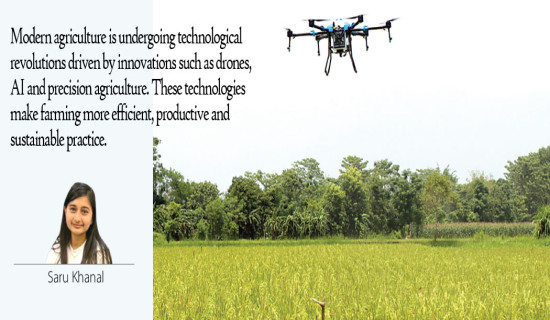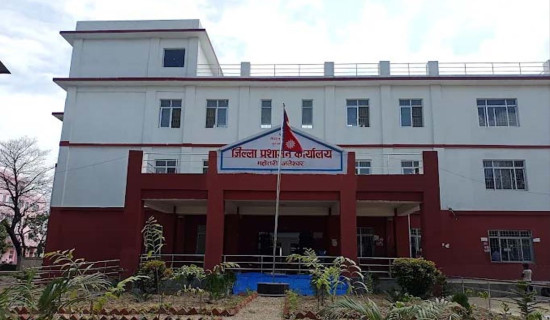- Saturday, 15 November 2025
Contain Rising Threat Of Dengue
Dengue fever, transmitted primarily by the Aedes aegypti mosquito, has rapidly emerged as a significant public health challenge in many parts of the world. With the changing climate, urbanisation, and inadequate vector control measures, the virus has become more prevalent, affecting millions globally.
With an increasing number of outbreaks, it poses a growing threat to public health, especially in tropical and subtropical regions. Recent outbreaks have made it clear that urgent, proactive measures are essential to mitigate the impact of this disease. Understanding the epidemiology of dengue and its prevention is crucial for both health professionals and the general public as we seek to curb its spread.
Epidemiology
Dengue has expanded beyond the tropical and subtropical regions. Its reach has expanded due to a combination of factors, including increased international travel, warmer global temperatures, and rapid urbanisation. These conditions provide the perfect breeding grounds for the Aedes mosquito, which thrives in stagnant water sources often found in densely populated urban areas. From Asia to Latin America, cases have surged, overwhelming healthcare systems and placing significant strain on public health resources.
In many developing countries, the burden is particularly heavy, where healthcare infrastructure is not adequately equipped to handle the high volume of cases, leading to increased mortality rates. The World Health Organisation (WHO) estimates that around half the world’s population is at risk of dengue, with over 390 million infections annually, of which 96 million manifests clinically.
Dengue is endemic in more than 100 countries, with Southeast Asia, Latin America, and the Pacific Islands bearing the brunt of its impact. The global incidence of dengue has increased 30-fold over the past 50 years, partly due to rapid urbanization, globalisation, and climate change. The World Health Organisation (WHO) estimates that about 390 million infections occur annually, with approximately 500,000 severe cases and around 25,000 deaths.
Four distinct but closely related dengue virus serotypes (DENV-1, DENV-2, DENV-3, and DENV-4) complicate the epidemiological landscape. Infection with one serotype provides lifelong immunity against that specific serotype but only partial and temporary immunity against the others. This sets the stage for secondary infections with different serotypes, which can lead to severe complications like dengue hemorrhagic fever and dengue shock syndrome.
Dengue transmission follows a seasonal pattern, with peaks often corresponding to the rainy season when mosquito breeding sites flourish. However, the virus’s spread is increasingly unpredictable due to factors like global warming and altered rainfall patterns, which are expanding the geographical range of the disease.
One of the most concerning aspects of dengue’s spread is its connection to climate change. Rising global temperatures have expanded the habitat of the Aedes mosquito, allowing it to survive in regions previously too cold for its survival. This has led to outbreaks in areas that had not previously experienced the disease, creating new challenges for health systems unprepared for this kind of infectious threat.
Warmer climates also accelerate the mosquito’s reproductive cycle, increasing the frequency of outbreaks. Additionally, erratic rainfall patterns result in more stagnant water, perfect for mosquito breeding. As climate change continues to intensify, it is likely that dengue will become more common, even in temperate regions.
In low- and middle-income countries, urbanisation has often occurred without proper urban planning. Poor sanitation, inadequate waste management, and the proliferation of slums have contributed to the increase in mosquito breeding sites. Water storage practices, such as open containers in water-scarce areas, offer ideal conditions for Aedes mosquitoes to thrive. Moreover, the inconsistent implementation of vector control programmes is a critical issue. Many regions still rely on reactive measures, like fumigation after an outbreak, rather than sustained preventative efforts. The lack of political will and funding for long-term strategies further exacerbates the problem.
To address dengue effectively, a multi-pronged approach is necessary, involving governments, communities, and individuals. Regular mosquito control efforts, such as insecticide spraying, habitat reduction, and biological control methods, should be maintained throughout the year, not just during outbreaks. Public awareness campaigns must educate citizens on the importance of eliminating mosquito breeding sites in and around their homes. Simple actions, like covering water containers and disposing of old tires or containers where water can collect, can make a big difference.
Prevention
Preventing mosquito bites is essential for individuals living in or traveling to endemic areas. Using insect repellents, wearing long-sleeved clothing, and sleeping under mosquito nets can reduce the risk of bites. Additionally, community-wide efforts, such as installing window screens and reducing mosquito entry into homes, can have a collective impact. In order to contain outbreaks, early detection and rapid response are crucial. Governments should invest in robust surveillance systems that can quickly identify and respond to rising cases. Addressing climate change is an indirect but crucial step in curbing the spread of dengue. By reducing carbon emissions and mitigating the impacts of global warming, we can help limit the expansion of mosquito habitats.
The epidemiology of dengue is shaped by a complex interplay of environmental, social, and biological factors. As dengue continues to spread into new regions, prevention strategies must evolve to address the challenges posed by climate change, urbanization, and globalisation. With coordinated efforts from governments, communities, and individuals, we can stem the tide of dengue and protect public health.
(Dr. Lohani is the executive director at Health Concern. lohanis@gmail.com)









-original-thumb.jpg)






